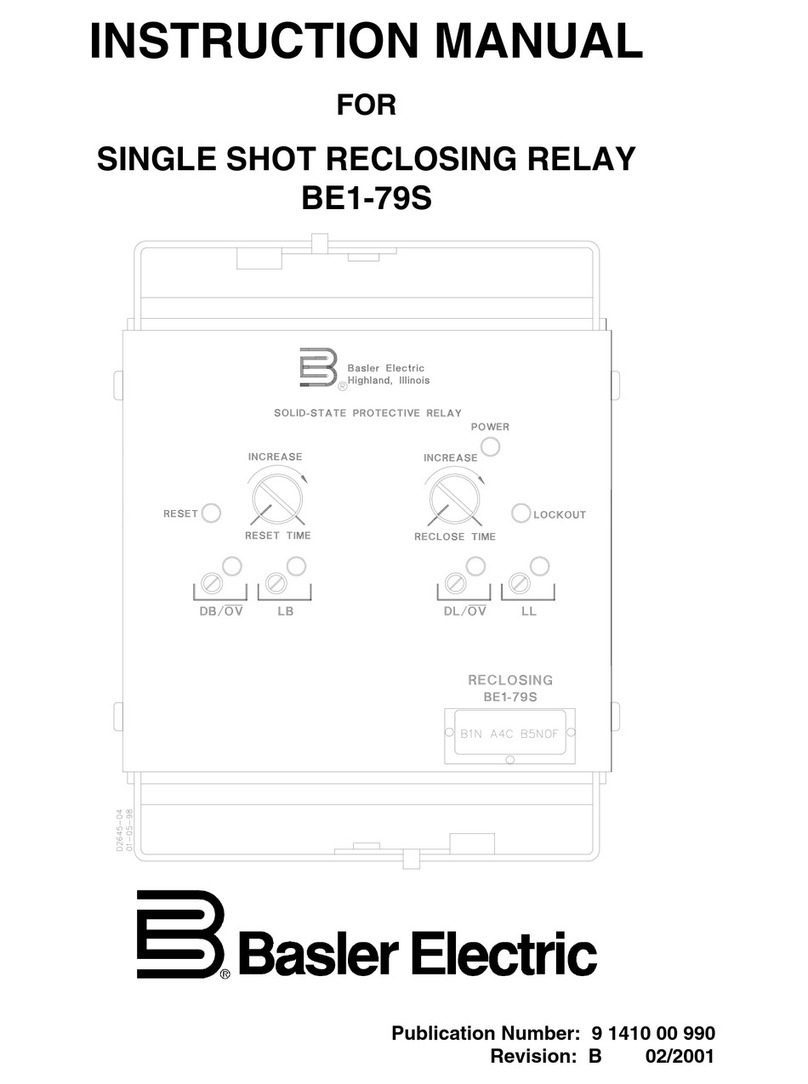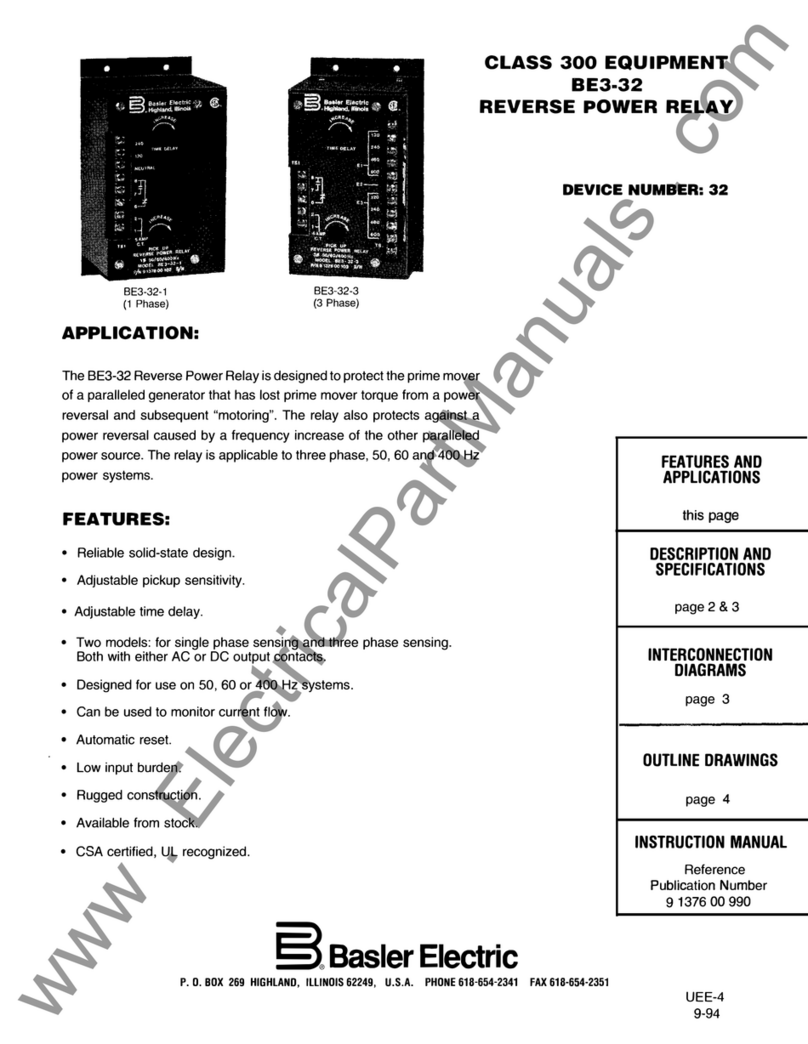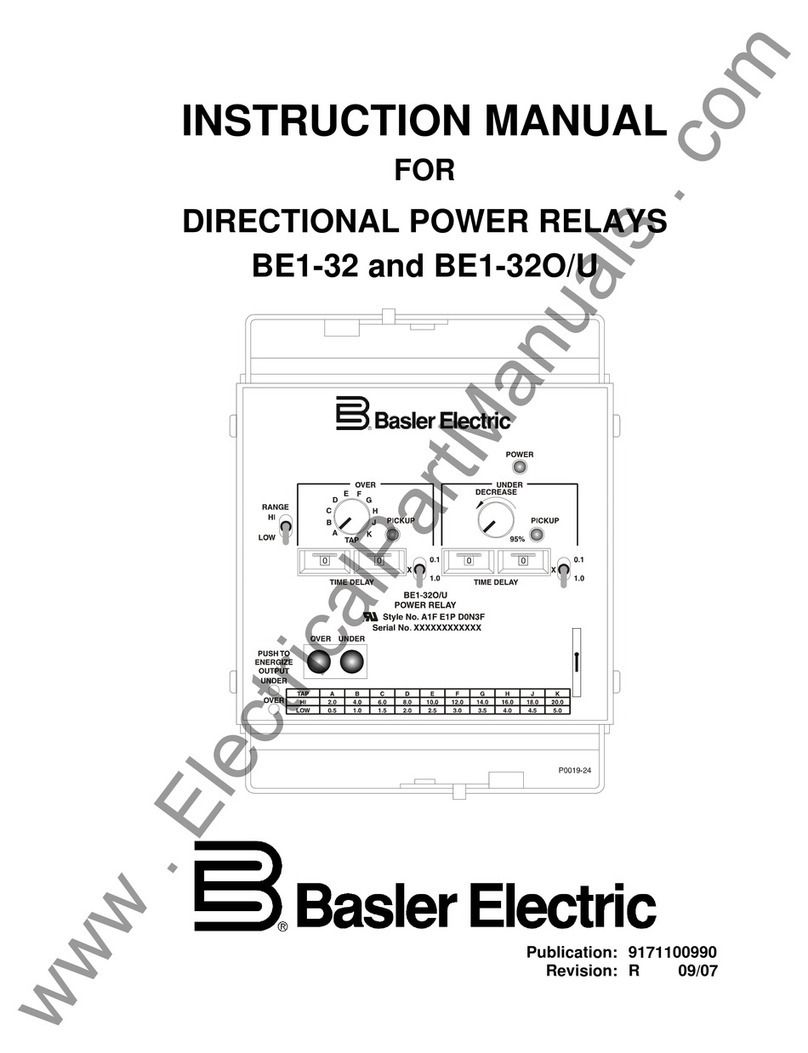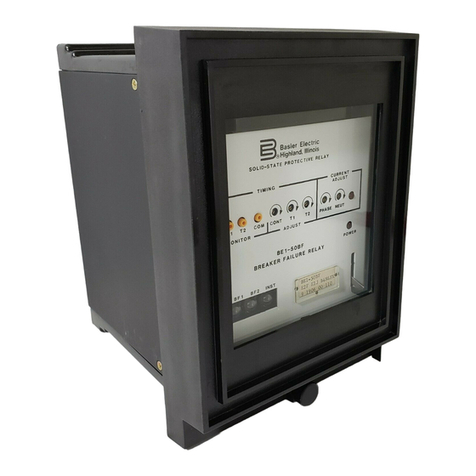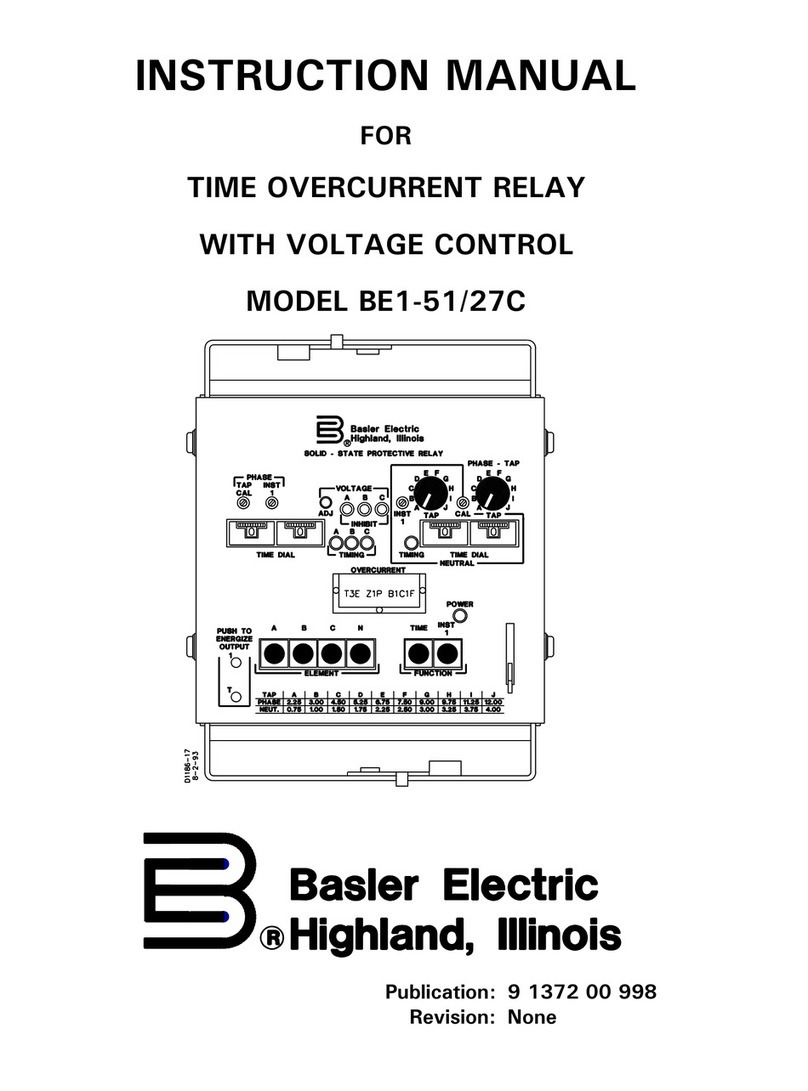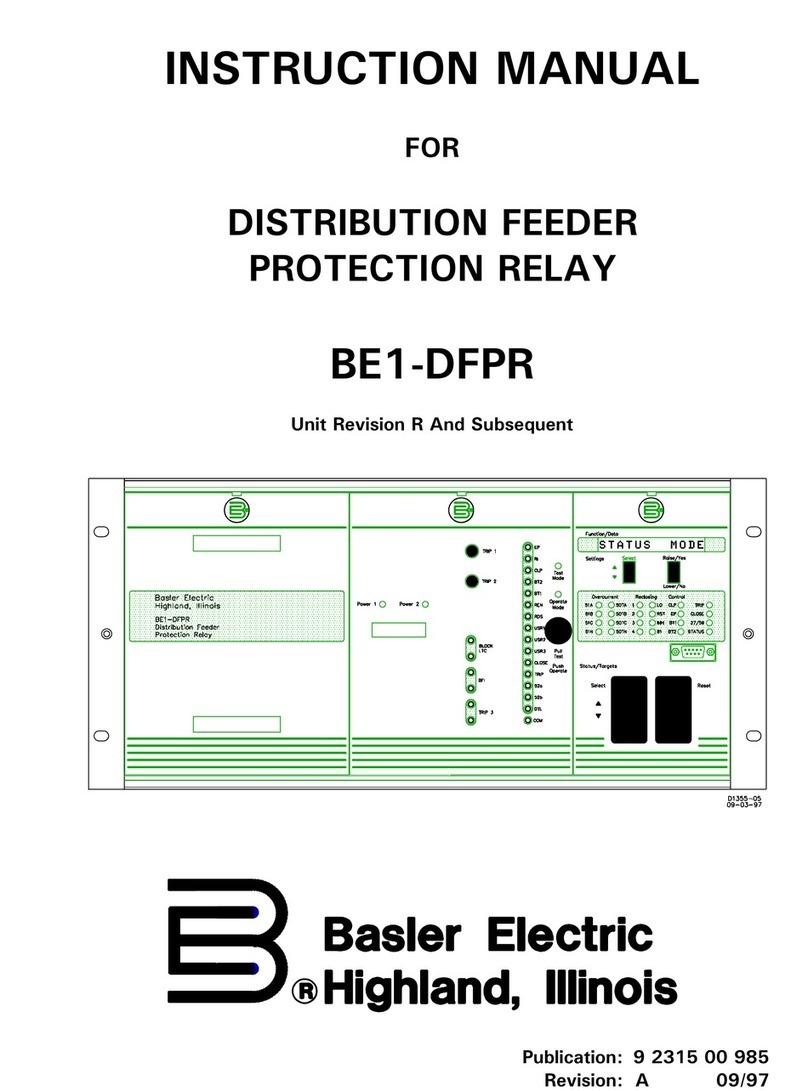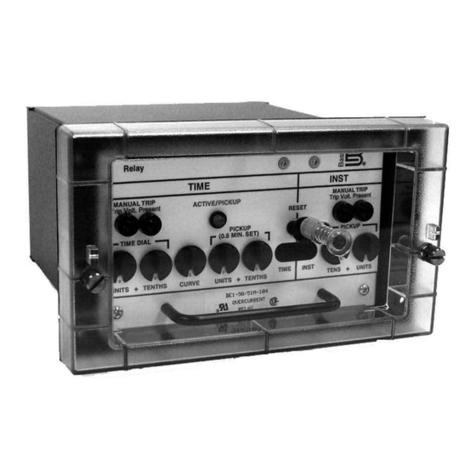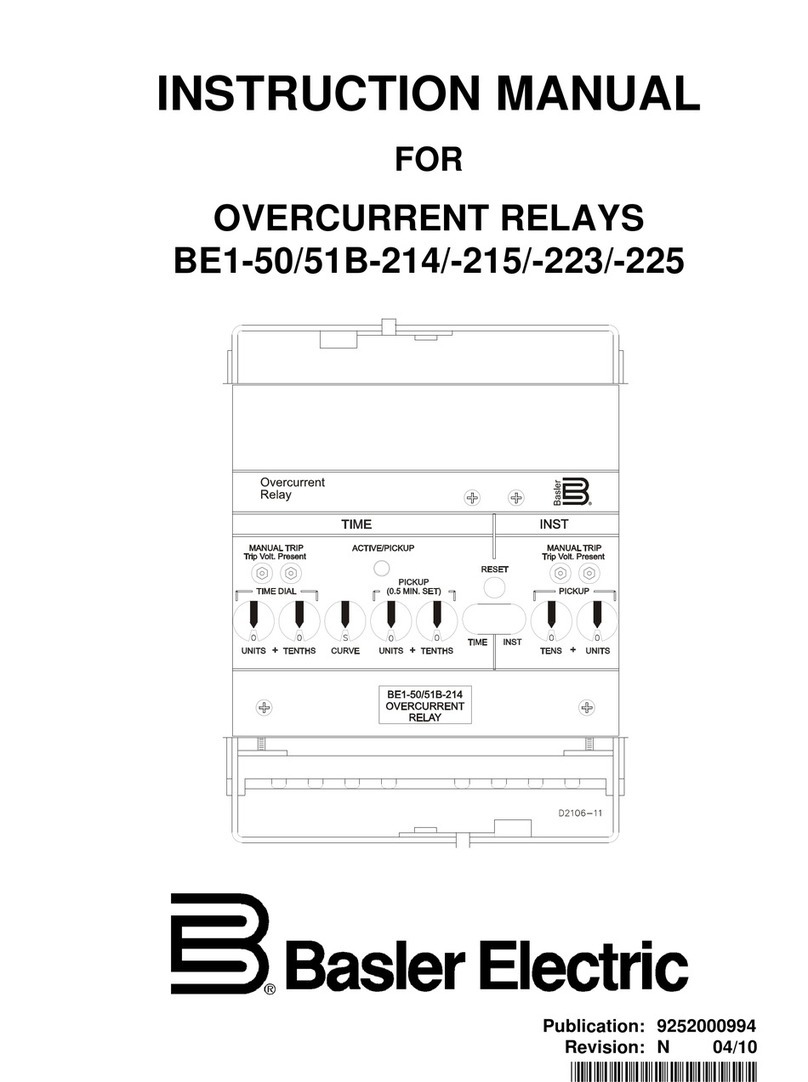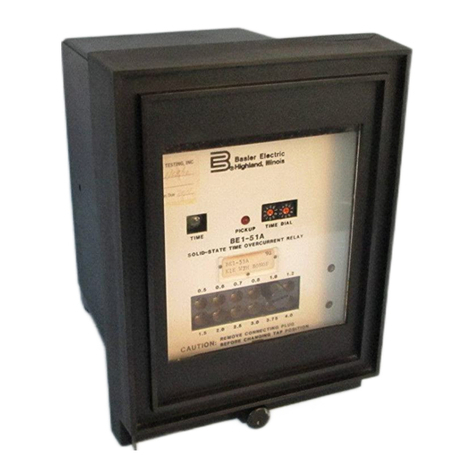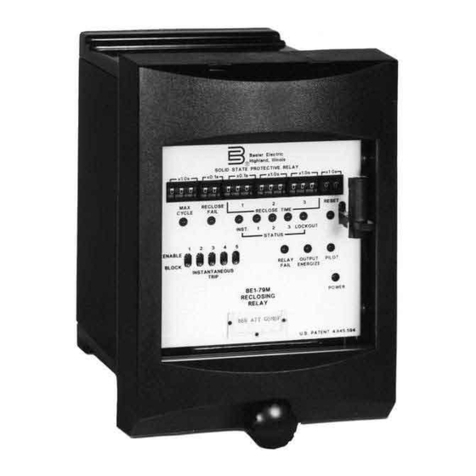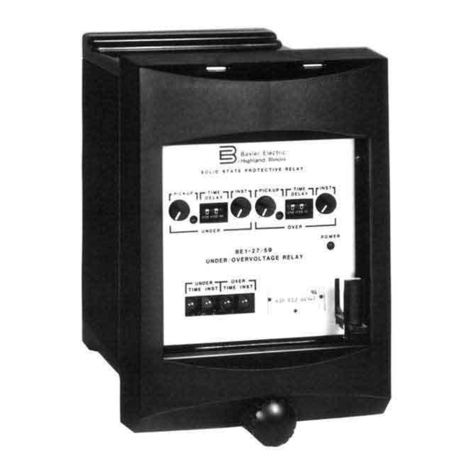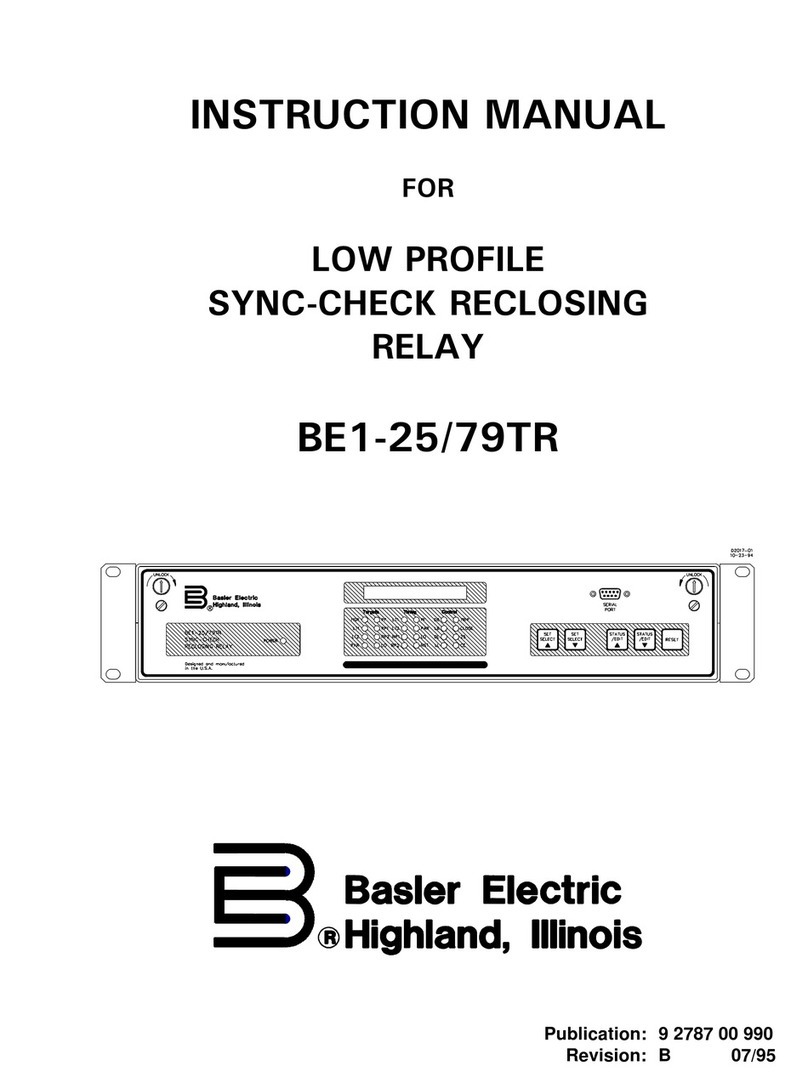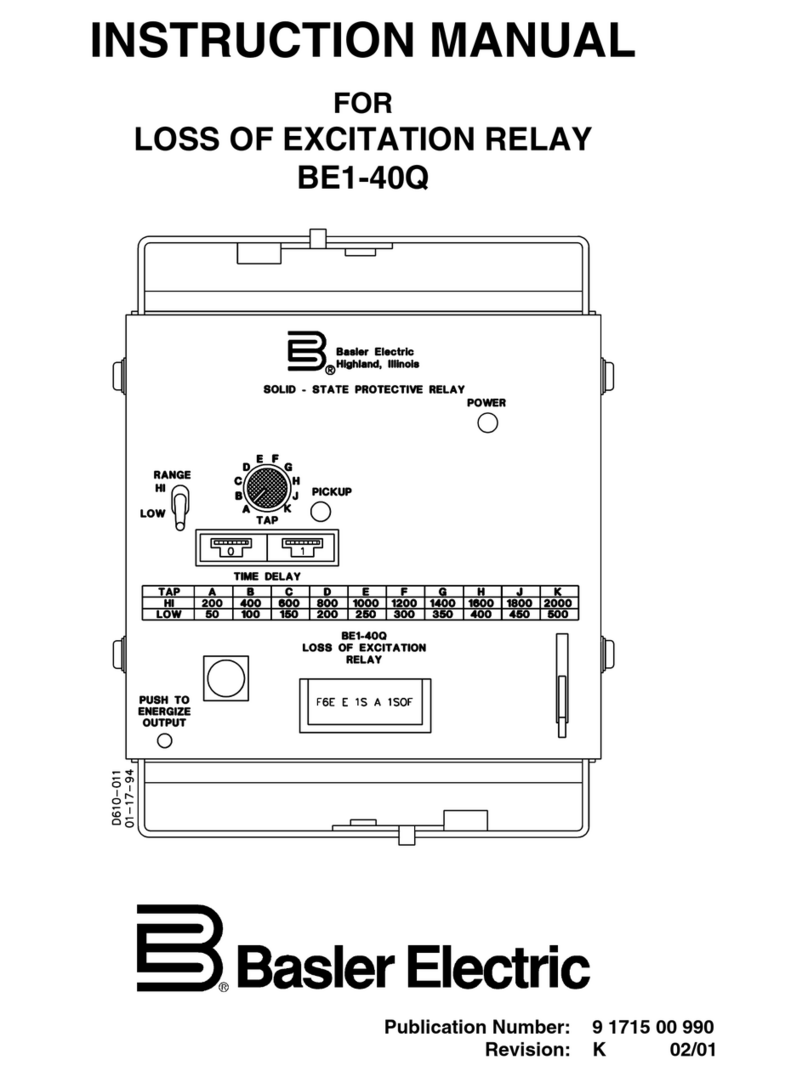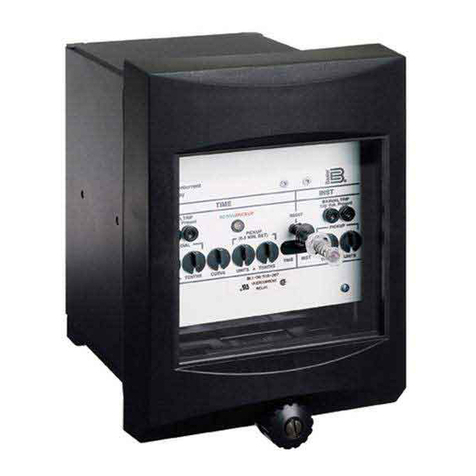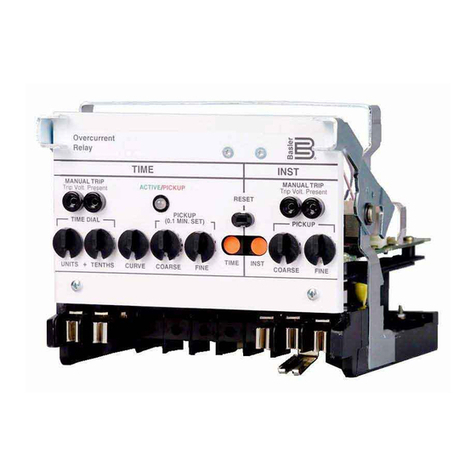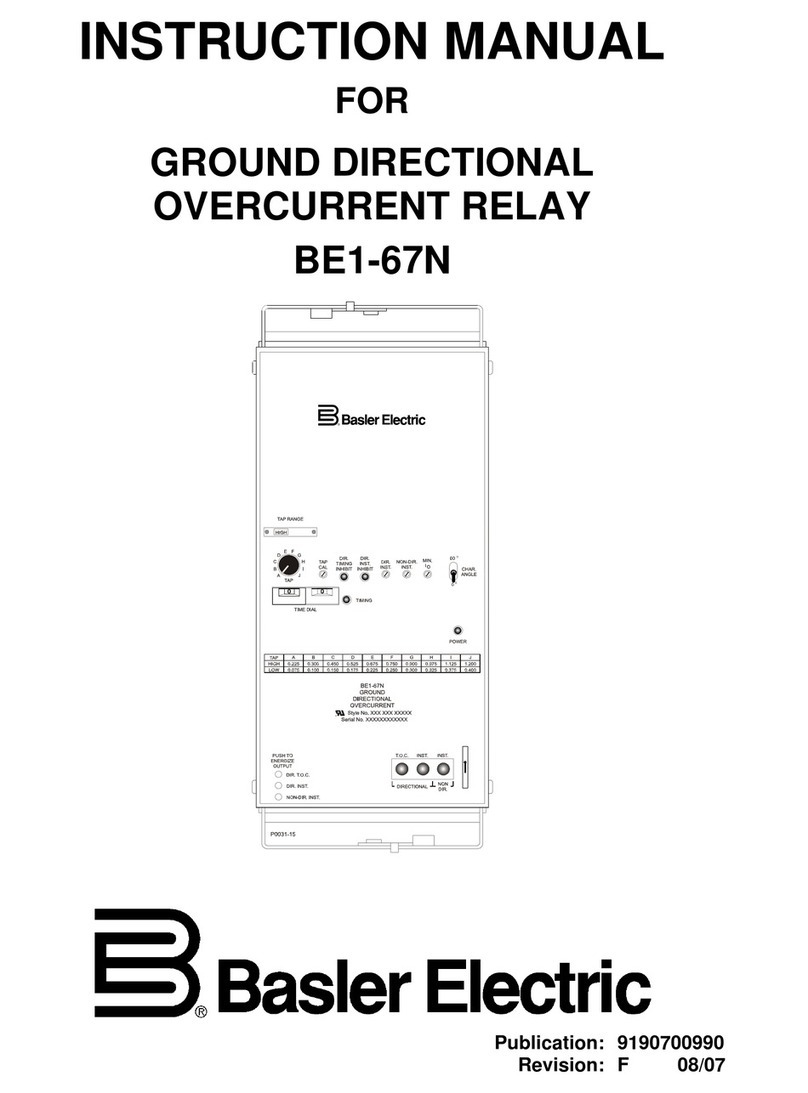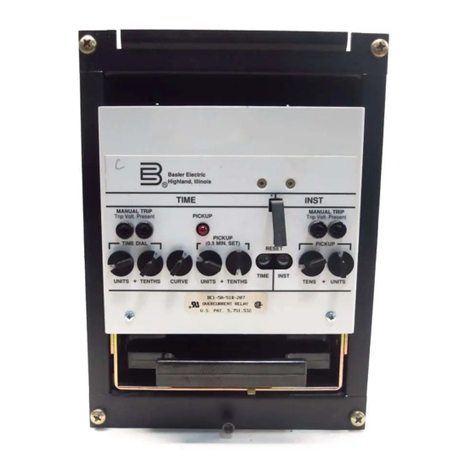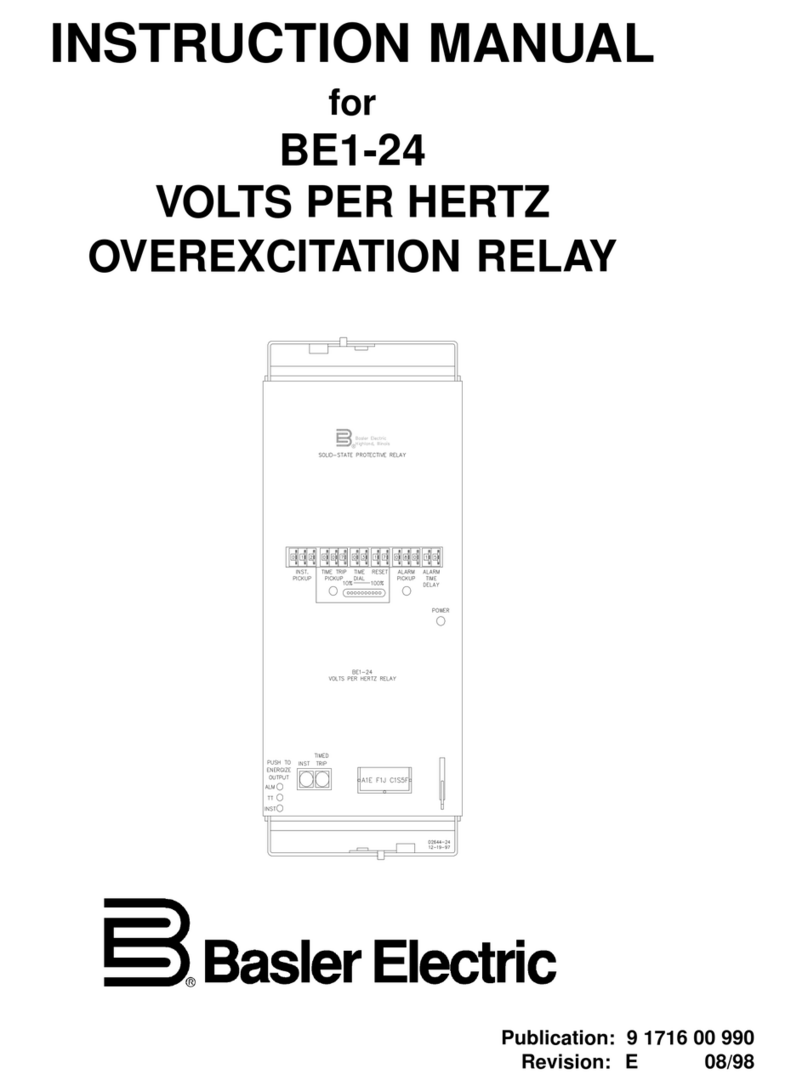
9282300990 Rev L BE1-87B General Information i
SECTION 1 • GENERAL INFORMATION
TABLE OF CONTENTS
SECTION 1 • GENERAL INFORMATION................................................................................................1-1
GENERAL............................................................................................................................................1-1
FEATURES..........................................................................................................................................1-1
Standard Features..........................................................................................................................1-1
MODEL AND STYLE NUMBER..........................................................................................................1-1
Style Number Example...................................................................................................................1-2
SPECIFICATIONS...............................................................................................................................1-2
Current and Voltage Settings..........................................................................................................1-3
Frequency.......................................................................................................................................1-3
Pickup Accuracy .............................................................................................................................1-3
Current Rating ................................................................................................................................1-3
Voltage Rating ................................................................................................................................1-3
Targets............................................................................................................................................1-3
Isolation...........................................................................................................................................1-3
Surge Withstand Capability (SWC) ................................................................................................1-3
Impulse Test ...................................................................................................................................1-3
Radio Frequency Interference........................................................................................................1-3
Electrostatic Discharge (ESD)........................................................................................................1-4
UL Recognition ...............................................................................................................................1-4
GOST-R Certification......................................................................................................................1-4
Environment....................................................................................................................................1-4
Shock..............................................................................................................................................1-4
Vibration..........................................................................................................................................1-4
Weight.............................................................................................................................................1-4
Case Size........................................................................................................................................1-4
Figures
Figure 1-1. BE1-87B Style Chart...............................................................................................................1-1
Figure 1-2. Typical Pickup Current Response Time without a Trip Delay ................................................1-2
Tables
Table 1-1. BE1-87B Power Supply Specifications....................................................................................1-2
www . ElectricalPartManuals . com
